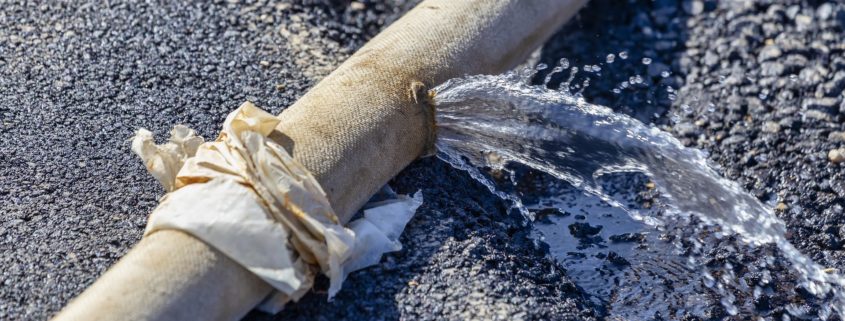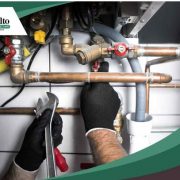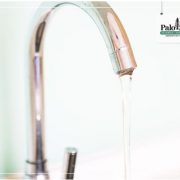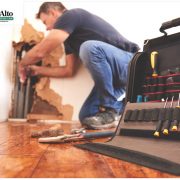Methods to Detect Water Leak
It’s important to take immediate action if you notice water leaks in your home. Aside from reducing your water bill expenses, this will also prevent further damage to your plumbing system. But the thing is, it can be tricky to detect water leaks. Not all homes have the same plumbing systems, either. So, if you’re just as confused about plumbing as most homeowners, here are some signs of water leaks and how to detect them on your own.
List of Contents
Common Causes of Water Leaks
Water leaks sometimes occur due to a variety of reasons, which can include the following:
- Pipes wear down over time
- Overgrown tree roots can break underground water pipes
- Animals burrowing or digging into pipes
- Weather fluctuations
- Malfunctioning of pipelines
- Bursting of water pipes
Methods to Detect Water Leaks
Tracking Your Water Bills
It’s a good idea to pay attention to your monthly water bills. This is because unexpected changes can help you determine if your home might have a water leak. For instance, you might notice that your water bill has gone up, but there haven’t been any changes to how much water your household uses. In this case, it means that your home probably has hidden water leak issues.
With the multiple water pipes installed underneath your system, it becomes challenging to detect exactly where the leaks are. So, you should look for a professional plumber to inspect your pipes, and make the necessary repairs. It’s important to take care of these issues before the leak gets worse.
Checking the Water Meter
One of the simplest ways to detect water leaks in your home is by checking the water meter. In most cases, plumbers place water meters in different locations, like in the basement, under your kitchen sink, or in concrete boxes outdoors. After you locate your water meter, ensure you turn off the water in your entire home. This includes all of your appliances. Definitely don’t leave the washing machine or dishwasher running while you do this test. Once everything is turned off, look at the water meter to find out whether there’s any movement. If you notice some, then there’s probably a leak in one of your water pipes.
On the other hand, if you don’t notice any changes, it’s advisable to wait for at least one hour and check again. There could be a slow water leak in the pipes if you can spot some minimal movement. Knowing the actual location of the leak is tough, though. Odds are you won’t be able to find it on your own, so contact a plumber right away.
Stethoscope Test
One of the easiest ways to detect water leaks is through vibrations coming from running water. When performing the test, it’s advisable to ensure that all pipe fittings are tightly closed.
The next step is to get a metal screwdriver and place the tip on the pipe, with the other side next to your ear. You’ll feel some vibrations if any water is flowing through. This can indicate that there may be a water leak in your pipe. You should call a plumber immediately to examine the actual location of the leak, and make the necessary repair or replacement.
Check for Clues
If your home is slightly older, then the chances of having water leaks in the pipes are much higher. Start checking the condition of your bathroom. Make sure to monitor if there are leaky faucets, drains, or showerheads.
In the long run, watching out for these things can help you save money on expensive repairs or replacements. You can also use this method to check if your kitchen pipes are leaking. If you suspect that there are possible water leaks, don’t hesitate to contact a professional to inspect your water pipes, and fix the problem immediately.
Related Content: Plumbing Basics Every Homeowner Should Know
Examine Your Toilet
Since toilets use approximately a third of the water in most homes, it’s essential to examine if the water is running properly. A leaky toilet wastes a lot of water, leading to a costly water bill. To check for water leaks in your toilet, you need to add some food coloring droplets or dye tabs. Next, leave the toilet without flushing for a few minutes. If the color begins to slowly disappear, there’s probably a leak. In this case, you need professional help to stop this situation from getting worse.
Check Your Outdoor Water Systems
Walk around your home to see if your garden accessories are properly working. Take a closer look at the functionality of your taps, hoses, irrigation systems, and fountains. If you notice that your hoses have holes that allow water to leak into unwanted areas, ensure these holes are sealed properly. If you see any part of your outdoor that’s wet, take a step further to identify the cause, or call a professional to fix the problem.
Leak Detectors
Leak detectors can easily help in identifying water leaks in pipes and fixtures. These handy devices are installed to alert you of leaks. They send a message through their alarm system. In most cases, this helps detect water leaks early enough to prevent major water damage to your home.
- Related Content: Understanding Your Home’s Water Usage
Growth of Mold
The major cause of mold growth in homes is usually water damage. If you come across mold in your bathroom, kitchen, or basement, there’s a higher chance that there may be a water leak.
Wall Discoloration
You may also notice some abnormal stains on your walls, and even ceilings. The stains are mostly brown or yellow. This is a sign that your water pipes may have leaks that are soaking your walls or ceilings.
Key Takeaway
These are some of the most effective ways to detect water leaks in your home before calling a professional. But if you’ve confirmed that you have a leaky pipe concern, don’t hesitate to call Palo Alto Plumbing. Water damage is costly and can be tough to repair. Don’t risk it. Our skilled and reliable plumbers can fix your plumbing leaks in no time.











